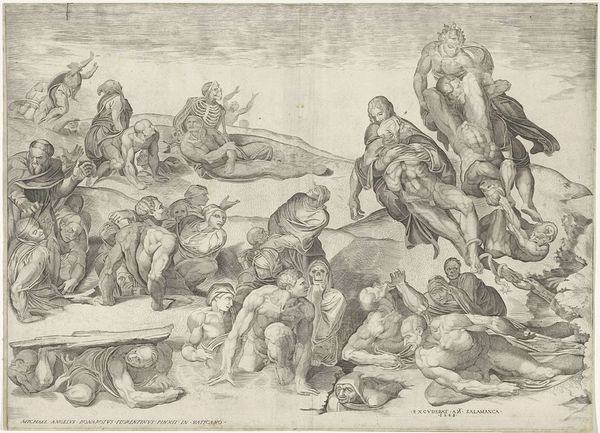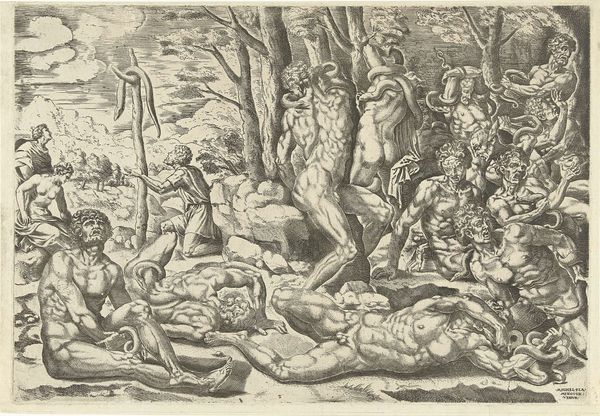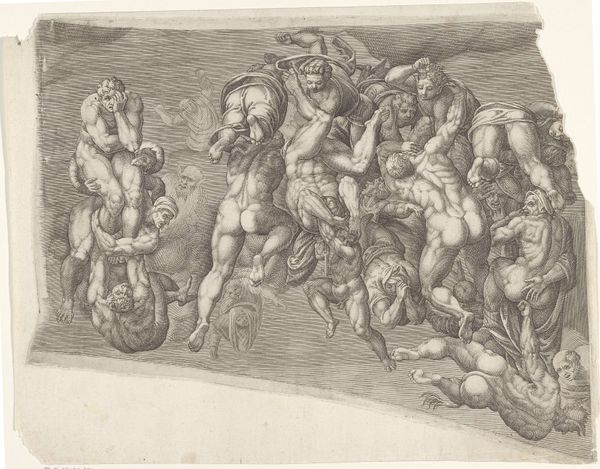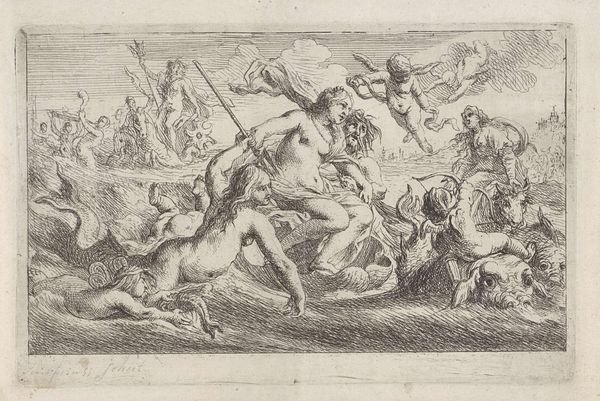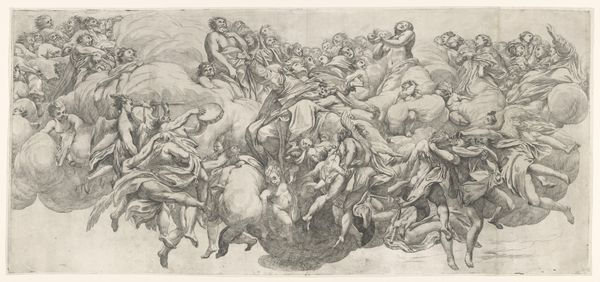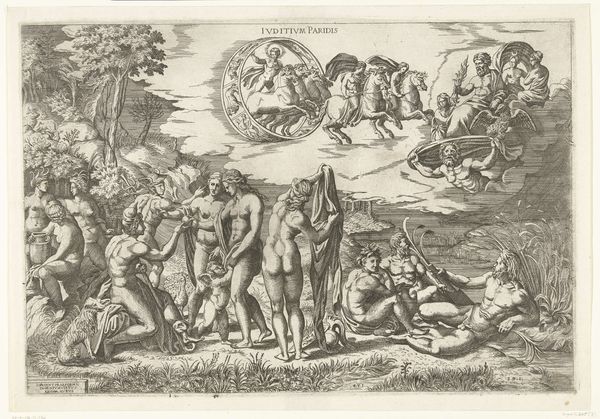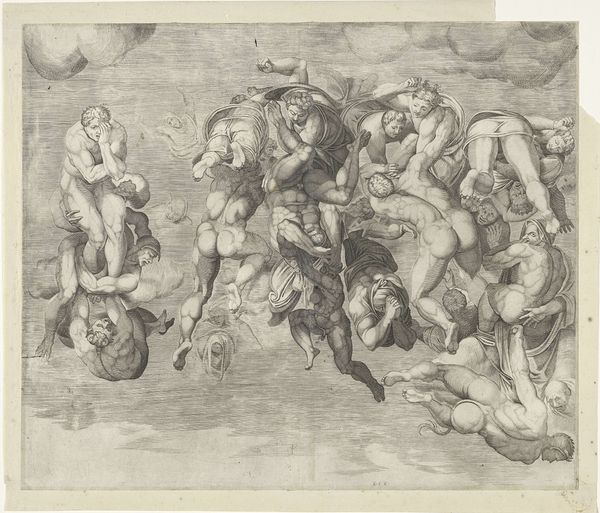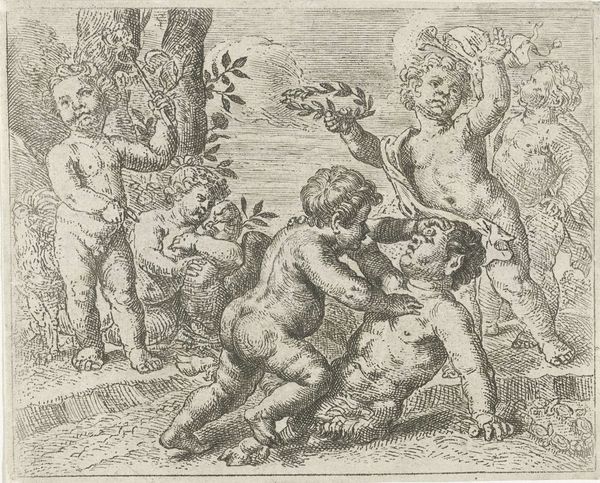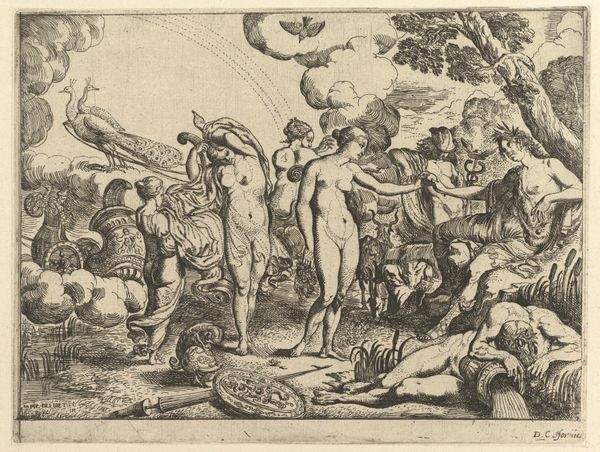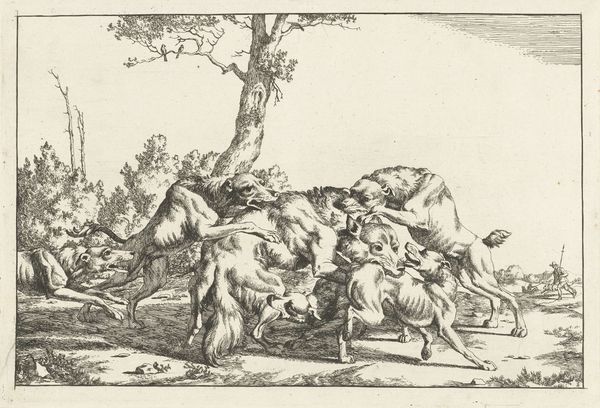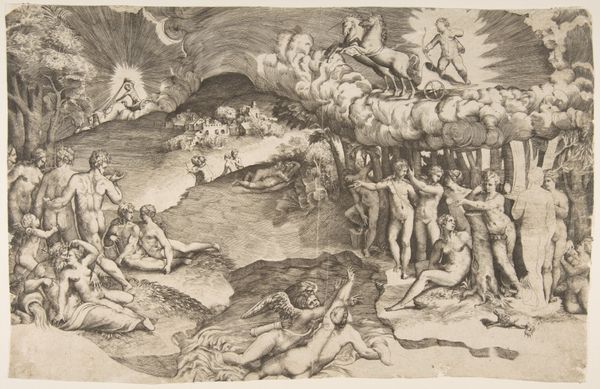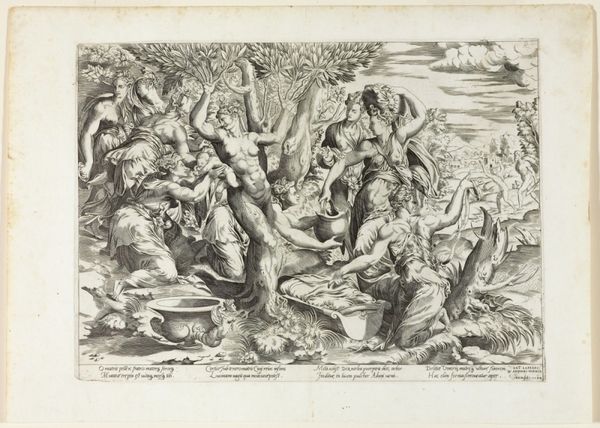
print, engraving
#
allegory
# print
#
mannerism
#
figuration
#
line
#
history-painting
#
engraving
Dimensions: height 331 mm, width 580 mm
Copyright: Rijks Museum: Open Domain
Curator: Let's pause here at Giorgio Ghisi’s “The Last Judgment, sheet L," created sometime between 1530 and 1582. A Mannerist print brimming with agonizing figures—what catches your eye first? Editor: The sheer density of bodies, writhing and piled upon one another. It's a potent visual depiction of chaos. I wonder about the physical act of creating such detail, the sheer labor invested in each engraved line. Curator: Labor is certainly evident, both in the depicted struggle and Ghisi’s execution. There's a feverish intensity to the hatching that suggests, to me, a reflection of the religious turmoil roiling Europe at the time. It’s more than just judgment; it’s anxiety made visible. Editor: Absolutely, the subject mirrors the artist’s own societal unease, shaped by the means of producing such artwork during those religious conflicts. Who had the resources to create these images? Who purchased them and why? What was the paper, the ink? Each speaks to an entire network of production and consumption. Curator: Yes! It invites us to meditate on our earthly existence, rendered in monochrome desperation. But look at the dynamism! Figures hurtle upwards and downwards. Ghisi plays with our perspective, throwing us right into the heart of this dramatic moment. Almost unsettlingly dramatic! Editor: And the visual lineage—I'm immediately drawn to the techniques employed. Ghisi isn’t inventing new paper or engraving tools, so in what innovative ways does he apply material practices available in his time? How can his engravings shed light on the evolving skills and capabilities of artisans in his time? Curator: Material limitations always force inventiveness, I agree. This engraving pulls us into its frenzy. It's a reminder that judgement, whatever form it takes, is a very human affair, etched in the marks we make. Editor: Exactly. It prompts one to ponder how the very materials and process of art making intersect with historical, ethical, and creative judgments. Food for thought.
Comments
No comments
Be the first to comment and join the conversation on the ultimate creative platform.
